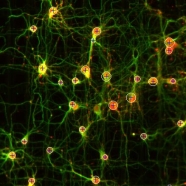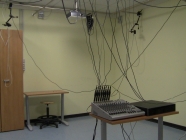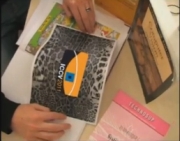The exciting aspect of the Istituto Italiano di Tecnologia (IIT) is the possibility to work on several aspects of science. This year was indeed very intense, until now I did not quite realise on which extent Computer Vision was applied in the projects we have in our group. While I was trying to put some order in the scientific activities there was something quite surprising. The visual shapes we were dealing with spanned from the smallest biological molecules to astral bodies in space — almost reaching a total of 14 orders of magnitude in size. Here there is a summary from the smallest to the biggest:
• 3D localisation of fluorescent particles for Nanoscopy – 10-8:  Localising the tiniest molecules in thick biological samples is a challenge in modern Microscopy. In this project we helped the IIT Nanophysics group to raise the state of the art in terms of accuracy in 3D localisation. More details on the new Nature methods paper here. Localising the tiniest molecules in thick biological samples is a challenge in modern Microscopy. In this project we helped the IIT Nanophysics group to raise the state of the art in terms of accuracy in 3D localisation. More details on the new Nature methods paper here.
|
• Analysis of the morphology of neuronal networks – 10-5:  This ongoing work is based on the in vitro analysis of the morphology of neuronal networks using images from a high-density microelectrode array (MEA). The aim is to extract the positions and links among different cluster of neurons. This information will be coupled together with electro-physiological signals in order to understand the functionality of the network. In collaboration with Alessandro Maccione and Luca Berdondini from the Neuroscience and Brain Technology (NBT) department @ IIT. |
• Automatic microphones localisation – 10-2:  The set of microphones and the audio arrays in the Cerberus lab need a precise 3D localisation in order to work. Recently we have found a new set of computational tools able to localise the microphone position solely from sound events. The overall accuracy of the system is less then half a centimeter. More news soon! |
• 3D deformable modelling – 100:  With Multiview 3D warps – M3DW we presented together with A. Bartoli a framework that can model dense deformations of an image from an image sequence. The ideal applications are surface retexturing and deformation cloning.
|
• Large-scale 3D reconstruction – 103: We have recently extended the BALM algorithm to deal with large-scale reconstruction of a size such as Piazza San Marco in Venice. A new update of the code and the data will be published soon.
|

Great article.